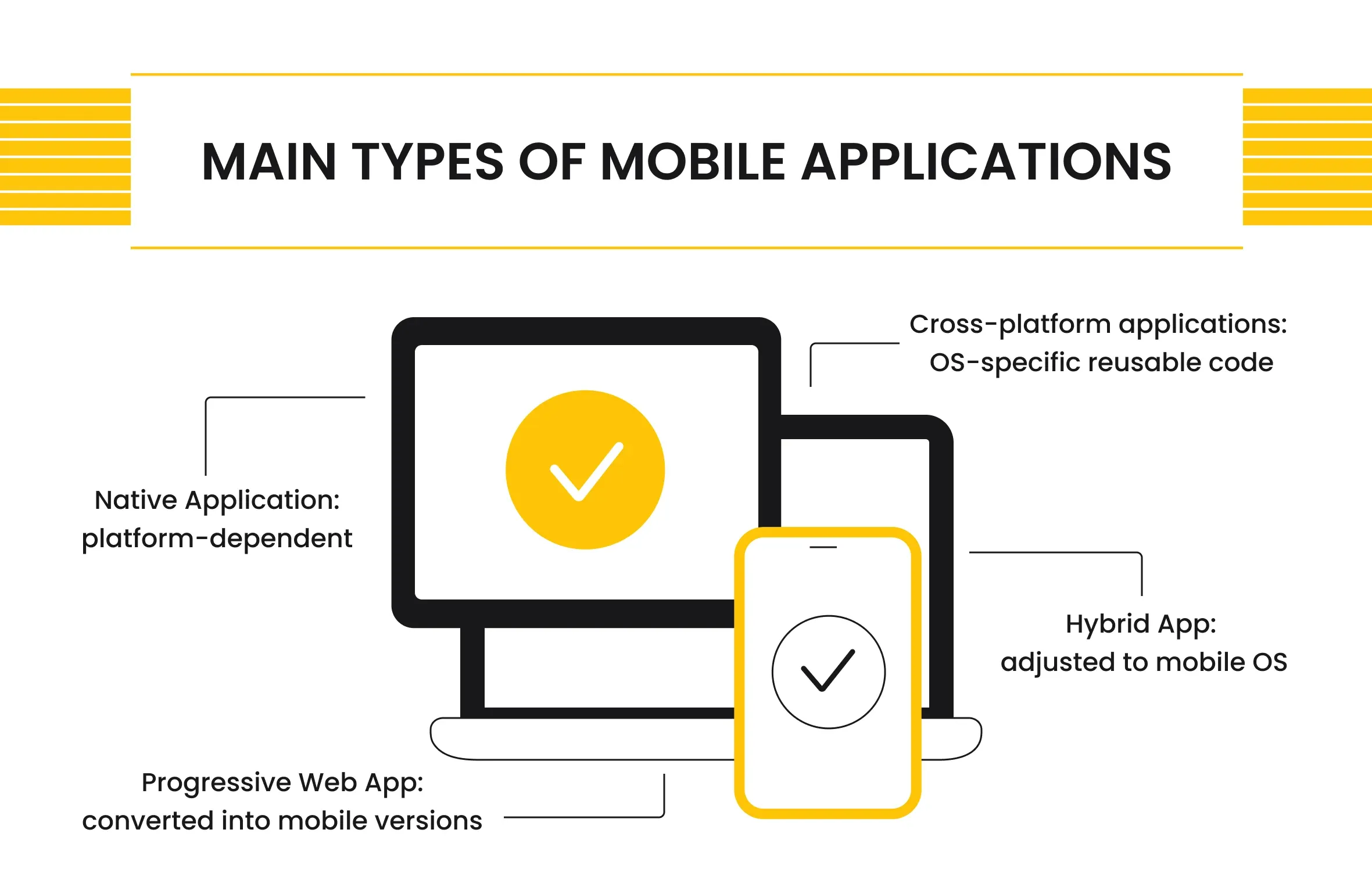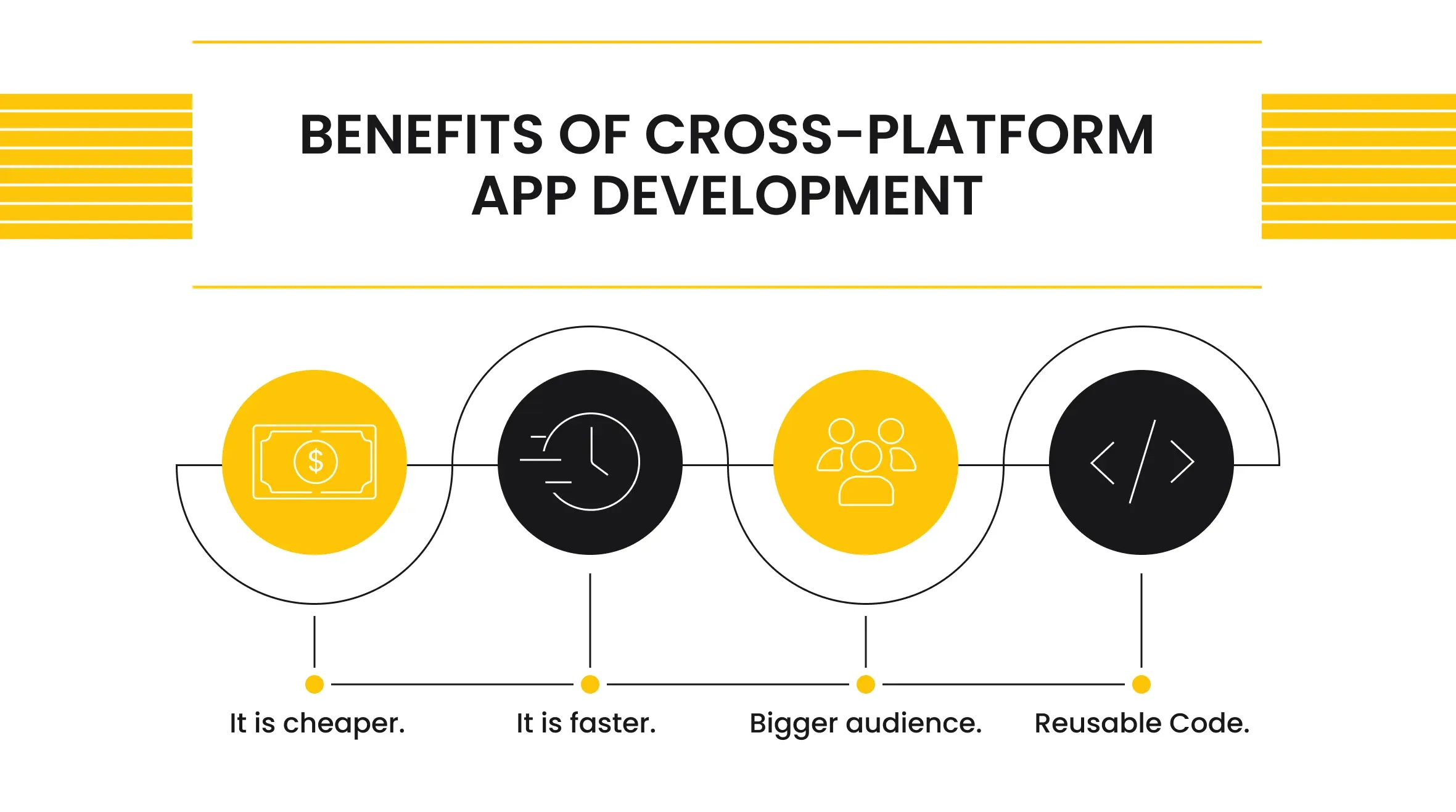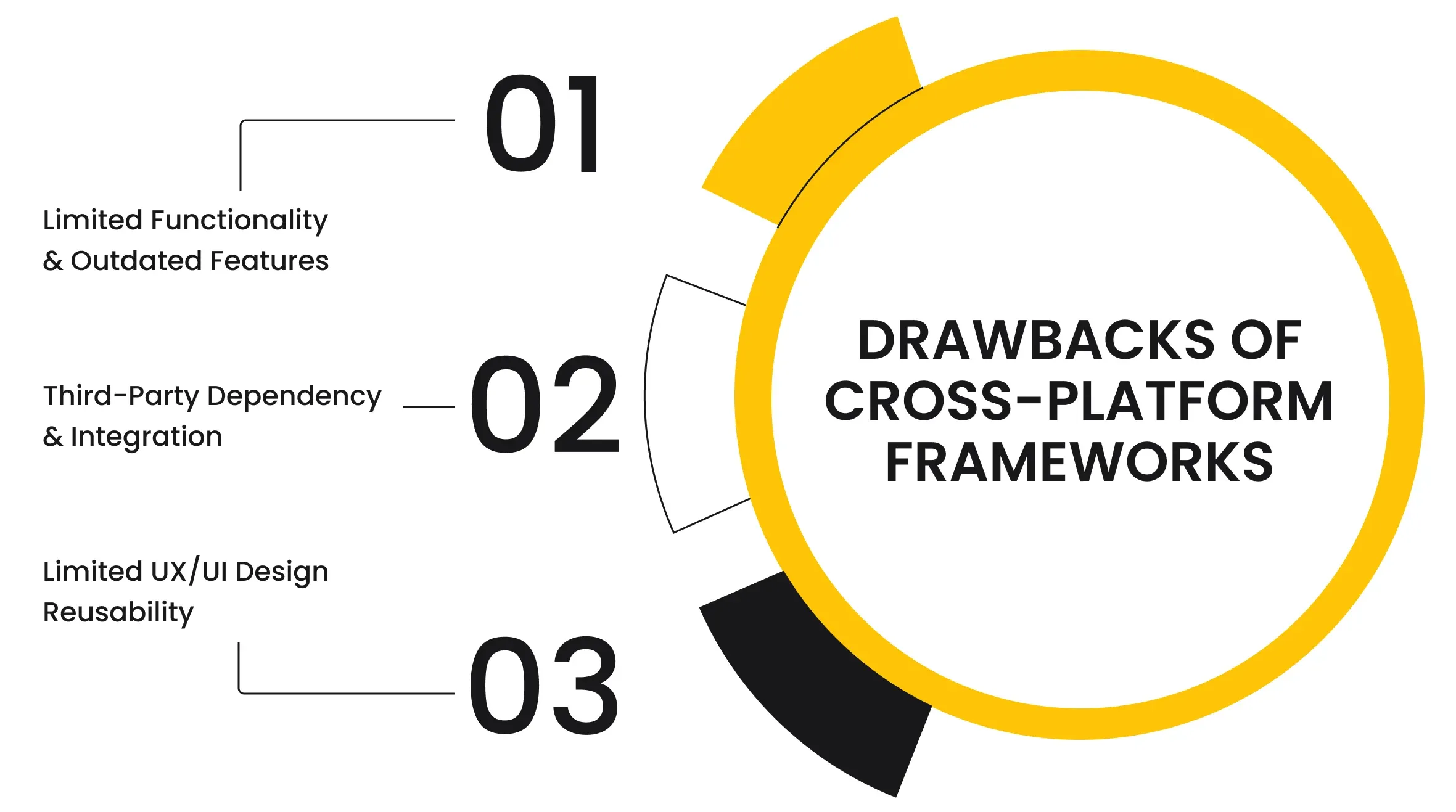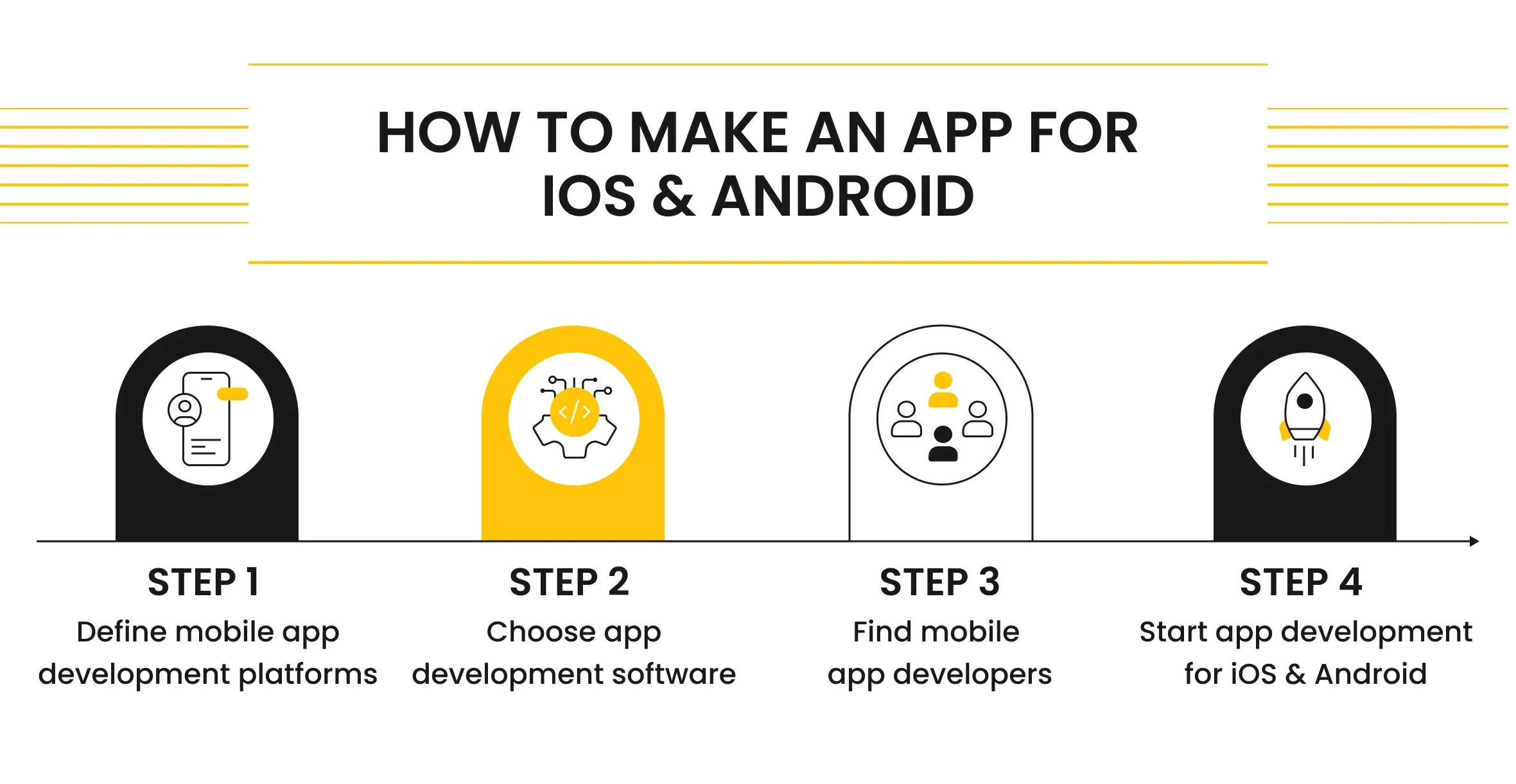How to Make an App Both For Android and iOS
March 16, 2023 • 5693 Views • 18 min read
Tetiana Stoyko
CTO & Co-Founder
In the world of technology, there will always be “holy wars” between the supporters of technological giants.
Probably each of us has at least once seen or even participated in arguing on Xbox vs PlayStation, or Chome vs Opera vs Mozilla Firefox, etc. Yet, one of the most essential and well-known such fights is the opposition between Android and iOS platforms.
We are here not to stand for any side of the conflict about outsourcing app development for iOS and Android. While it may be just a fun activity for the fans of a specific OS, developers, as well as development companies should take such disputes seriously.
The advantages of each mobile platform may be a real deal-breaker for product owners. The importance of native platforms has been significant lately. Yet, the market was slightly changed due to the improvement of existing software solutions and the appearance of new cross-platform mobile development approaches.
Lately, software product development services that assumed the creation of an app both for iOS and Android was challenging in terms of saving time and resources, and offering the same functionality and seamless working process.
One of the most effective solutions for a long time was to develop two native apps: one for Android and the second for iOS, using the most suited tech stacks, designed specifically for these operational systems.
Alternatively, hybrid apps and progressive web applications found their place among mobile app development trends as well. Yet, once again, in such cases, the functionality and performance of such apps would be difficult to maintain.
Nowadays, the number of best tools to develop mobile apps is constantly increasing, allowing niche-experienced developers to experiment and gain great results on both platforms, not to mention the overall development of mobile devices’ hardware.
So, let’s try to answer the question of how to make an app for both iOS and Android, what are the odds and are there any best mobile app frameworks for today?
What Do iOS And Android Apps Statistics Say?
First of all, we will have to learn the context of each mobile platform to figure out what we are going to deal with, and what our expectations should be.
iOS and Android apps are the most popular mobile applications. These two platforms occupy the largest part of the mobile application market, almost all of it.
According to Statista, the Android operating system is dominant in the mobile OS market, having a share of 70.1% of this market as of the 4th quarter of 2023. At the same time, its main opponent, iOS share is only 29.2% of the market. It may seem that we have a clear winner because the gap between them is too obvious and significant. Yet, take your time with the decision.
Android is a much more popular choice as a basic mobile platform, which is used on a wide variety of mobile devices due to its open-source nature. At the same time, iOS is a closed ecosystem, used only in Apple devices. This is why 27.6% seems not so low now.
Moreover, we also should take into account the actual revenue of the apps for each platform. Judging from the charts, proposed by BusinessOfApps, we will find out that the annual revenue from iOS applications and games for 2022 equals 86.8 billion dollars, while Android apps and games generated only 42.3 billion dollars for the same period.
In other words, iOS-based applications are three times less spread than Android, yet are twice more profitable. This is why, when considering your goals, whether you are looking for a large community of users, or are trying to monetize your software product effectively, you may need to decide which platform to pay more attention to.
However, you will need more than the foregoing statistics to achieve your goals. This also does not mean, that iOS applications will be less popular than Android ones, or that it is impossible to monetize your Android app successfully. Everything depends on whether you will or will not choose the software development process that works.
What Is Cross-Platform App Development?

There are a few main types of mobile app development platforms: PwA vs Hybrid vs Native apps.
- Native apps, designed for a certain OS with the use of a defined tech stack. Can be developed for a single platform. It is similar to how to make an app for iPhone, or Android.
- Hybrid applications depend on the implementation of web development technologies. They are native-like, and the code reusability allows develop an app for both iOS and Android. Usually, they are less optimized and show worse performance results, as well as may require UI redesign, and need help to support some functions. Still, it is a popular approach to mobile app development for iOS and Android.
- Progressive Web Apps, or simply PwA. These are web applications, which were converted into mobile apps, or propose the same functionality as other mobile apps and can be downloaded. Yet, their possibilities also can be limited and less efficient. It is the second most popular solution for developing for iOS and Android at the same time.
Finally, we can also add cross-platform frameworks for mobile applications to this list. They were created to make it possible to develop an app for both iOS and Android. So, they are commonly confused with other such types, especially hybrid applications. Despite their similarity in supporting app development for iOS and Android, these two development environments are very different.
To cut a long story short, cross-platform app development frameworks are used to develop a single mobile app, which can be used for both iOS and Android. One of the most important features of these frameworks is reusable code. It can be shared between different platforms.
In other words, instead of separate Android and iOS app development processes, you can create a single basic app using cross-platform mobile development frameworks. Then, you have to adjust it to each platform, slightly changing or implementing new code units.
Cross-Platform App Development Framework Benefits

The benefits of the best cross-platform mobile development frameworks and their features will vary, depending on the chosen technology.
For instance, there are Flutter, React Native, Cordova, Xamarin, and others. Each of them has its specifics, pros, and cons.
Instead of examining each feature, let’s sum up the main benefits of cross-platform frameworks, suitable for mobile app development for iOS and Android.
- It is faster. Thanks to the nature of this app development software, it takes less time to make an app for both iOS and Android. While mobile app development for iOS and Android (native apps) requires creating them from scratch, cross-platform mobile development happens once.
- It is cheaper. Developing multiplatform Android and iOS app development is cheaper and allows product owners to make profits faster. They can save money on hiring a dedicated software development team. Cross-platform mobile development and app adjustment take less time. Additionally, while native Android and iOS app development may require additional skills in working with a specific platform, cross-platform app development happens at once.
- Access to a wider market and bigger audience. Both iOS and Android apps cover almost the whole market of mobile platforms. So, a cross-platform app development for iOS and Android targets almost all mobile device users, regardless of their OS. At the same time, native app development for iOS and Android targets a limited group of users.
Drawbacks of Cross-Platform Mobile Development Frameworks

This app development software is not ideal and has its disadvantages as well.
- Limited UX/UI Design Capabilities. They cannot use all the possible features, primarily OS-specific built-in features. The code can be reused, but UI elements - can’t. So, when you find mobile app developers, make sure they are experienced. They will have to find out-of-the-box solutions to ensure a high level of user experience and how to deal with some user interface components.
- Limited and outdated functionality. Regardless of how great cross-platform app development software you choose - new native features won’t be available off the bat. Such mobile app development platforms require time for updates and enable access to new features. At the same time, native mobile app development for iOS and Android allows these features as soon as the OS is updated.
- Integration and Third-Parties dependency. Eventually, cross-platform Android and iOS app development commonly depend on third-party software. These extra technologies are usually used as a crutch to enable some of the local OS features or functionality, settings, etc.
How To Make An App For iOS And Android?

So, how does the best app development software work?
The general working scheme for developing for iOS and Android seems very easy. Cross-platform Android and iOS app development is very typical:
- Define mobile app development platforms (iOS, Android, BlackBerry, etc)
- Choose app development software (Flutter, React Native, Cordova, etc)
- Find mobile app developers (iPhone app developers for hire, Android developers, etc)
- Start app development for iOS and Android (or other optional mobile OS)
In other words, cross-platform mobile app development for iOS and Android processes is identical to any other IT outsourcing and white-label app development: there are software engineers who are coding, designers who are creating UI components, etc. Everything is processed as in any other development case.
At the same time, when you develop an app for iOS and Android, the framework automatically adapts the code units and transforms them into OS-specific native code. So, such frameworks as React Native can be compared with “translators”:
For instance, they are taking the code samples, created by iPhone app developers for hire, and are “translating” them into the required native programming languages, supported by Android.
As a result, the easiest way to answer the “How to make an app for iPhone and Android?” question is:
- advice to perform independent native app development for iOS and Android
- use a cross-platform framework or other similar tools to develop an app for iOS and Android.
By hiring dedicated development teams, familiar with Android and iOS app development software, you can get the code basis of an app for both platforms in terms of a single white-label app development project. It will still require some time to adjust certain elements and code samples. For instance, Xamarin assures it can get up to 96% code reuse.
Finally, when the development process and successful QA tests, the product owners can publish their apps. Yet, even before it, it is recommended to obtain app approval on the desired platforms.
Each mobile app is officially distributed through specific stores like Google Play(Android) and App Store(iOS). To publish your app, it must meet the requirements of mobile app development platforms and not threaten the users. The approval process is the same for any app, no matter whether they are hybrid, native, or cross-platform.
Develop an App for iOS and Android with Incora
There are 4 main ways of how to make an app for iPhone and Android. However, if you are going to develop an app for both iOS and Android devices, you will have 3 options left, because native apps should be considered as two different applications.
One of the easiest ways how to make an app for iPhone and Android is by outsourcing software development to Eastern Europe and hiring dedicated mobile app developers from Ukraine. Thus, you will get niche-experienced software engineers, capable of developing for iOS and Android in a single run. It is also noticeably cheaper and faster, compared to finding in-house multiplatform mobile app developers.
If you wonder how to find an app developer, that meets your expectations and has proven expertise - research your IT outsourcing vendor before you hire mobile developers:
- Find them on B2B development platforms like Clutch
- Look for Feedback and Reviews from previous clients
- Examine their website (blog and case studies)
- Set up a meeting with the IT vendor
- Estimate the future software project
- Meet the team and interview them
- Sign the agreements if satisfied
What’s your impression after reading this?
Love it!
3
Valuable
5
Exciting
1
Unsatisfied
3
FAQ
Let us address your doubts and clarify key points from the article for better understanding.
What is the first step in developing an app for iOS and Android?
The first step is conceptualizing your app idea. Define its purpose, target audience, features, and functionalities. Conduct market research to understand user needs and preferences.
Which programming languages are used for iOS and Android app development?
- For iOS development, you primarily use Swift or Objective-C.
- For Android development, you use Java or Kotlin.
Should I develop separately for iOS and Android, or should I use a cross-platform framework?
It depends on factors like budget, time constraints, and app complexity. Cross-platform frameworks like React Native, Flutter, or Xamarin allow you to write code once and deploy it on both platforms, reducing development time and costs.
How do I choose the right cross-platform framework for my project?
- Consider factors such as performance requirements, team expertise, community support, and integration with existing systems.
- Evaluate each framework's features, documentation, and ecosystem.
What are the key differences between cross-platform and native development?
- Cross-platform development uses a single codebase for multiple platforms, while native development requires separate codebases for each platform.
- Native development often provides better performance and access to platform-specific features, but cross-platform development offers faster development cycles and lower costs.
Can cross-platform apps access native device features?
- Yes, cross-platform frameworks provide APIs and plugins to access native device features like camera, GPS, accelerometer, etc.
- However, some advanced or platform-specific features may require custom native code integration.
How do I test cross-platform apps on different devices and platforms?
- Use emulators or simulators provided by the framework or platform.
- Test on real devices to ensure compatibility and performance.
- Utilize automated testing tools and services for comprehensive testing across platforms.
you may also like
Let’s talk!
This site uses cookies to improve your user experience. Read our Privacy Policy
Accept

Share this article